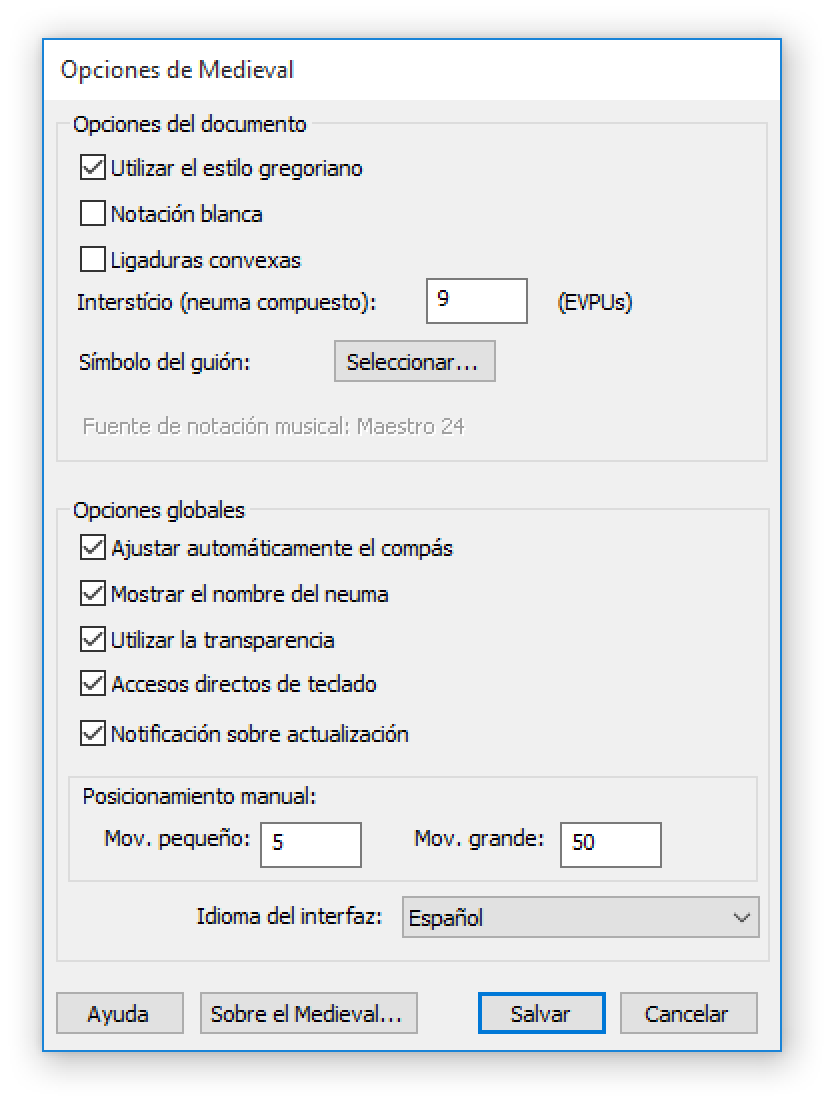The Medieval Options Dialog Box (español)
The Medieval Options Dialog Box (Opciones de Medieval)
The Medieval Options dialog box is where you can adjust Medieval parameters for your scores or for the general behavior of Medieval 2.
There are two sections:
Document Options (Opciones del documento)
(These options can be adjusted for each score.)
- Notación blanca: check this if you want “white” shapes for notes or ligatures (but you can toogle any time between black and white with the Notehead tool.)
- Ligaduras convexas: check this if you want convex rather than concave ligatures.
- Utilizar el estilo gregoriano: If checked, the high part of the podatus will have specific look.
- Interstício (neuma compuesto): the default space inbetween parts when creating a compound neume.
- Simbolo della guida: this is where the default custos symbol can be chosen.
- Símbolo del guión: this is normally “Neuma 24” be there might be more font style available in the future.
Global Options (Opciones globales)
(These options are global for all scores.)
- Ajustar automáticamente el compás: normally, you should keep this option always checked!
- Mostrar el nombre del neuma: check this if you want Medieval to send you a friendly notification with the name of the neume just created.
- Utilizar la transparencia: Medieval will fade the tool palette automatically if not in focus.
- Ativar os atalhos do teclado: if you currently do not use Medieval, it is recommended to uncheck this.
- Notificación sobre actualización: check this if you want Medieval to (gently) notify you when an update is available.
- Posicionamiento manual, mov. pequeño/grande: this rules the spaces used by the Nudge Tool.
- Idioma del interfaz: select your language of choice for Medieval 2 user interface (the other parts of Finale won't be affected!)

![]() See the Options dialog box in other languages:
See the Options dialog box in other languages:
Learn more
- Explore the Medieval menu.
- Explore the Tool Palette.
✶ ✶
✶
Created with the Personal Edition of HelpNDoc: Easily create CHM Help documents

